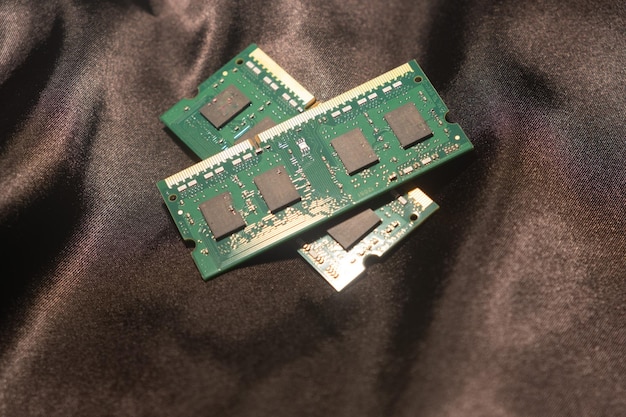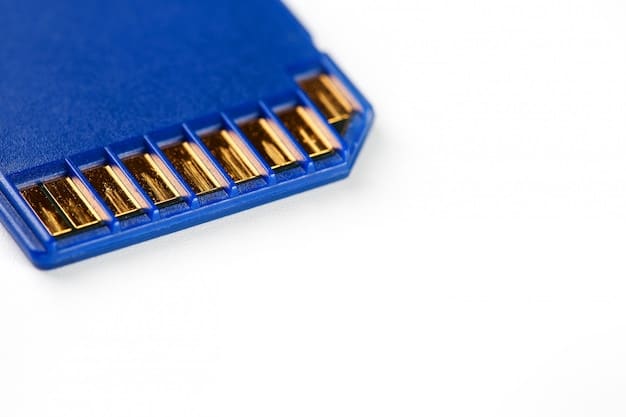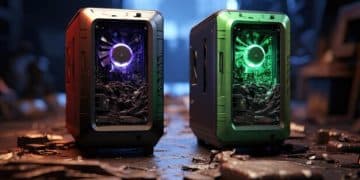Next-Gen Laptops: Speed Boost for Video Editing & Design?

Next-gen laptops offer significant speed improvements for video editing and graphic design, thanks to advancements in processors, GPUs, and memory, enabling smoother workflows and faster rendering times.
Are you a creative professional wondering if upgrading to a next-gen laptop will truly accelerate your video editing and graphic design tasks? Let’s dive into how much faster these new machines really are.
Next-Gen Laptops and Creative Performance
The latest generation of laptops promises a revolution in creative workflows. Boasting cutting-edge processors and graphics cards, they aim to significantly reduce rendering times and improve overall performance in demanding tasks.
But how much of this is hype, and how much translates to tangible benefits for video editors and graphic designers? Let’s break down the key components that contribute to this performance boost.
CPUs and Processing Power
The central processing unit (CPU) is the brain of any computer, and in next-gen laptops, we’re seeing a surge in core counts and clock speeds. This translates into faster processing of complex calculations, benefiting tasks like video encoding and complex layering in graphic design.
- Increased core counts: More cores allow the CPU to handle multiple tasks simultaneously, reducing bottlenecks.
- Higher clock speeds: Faster clock speeds mean quicker processing of individual tasks, like applying filters or effects.
- Improved architecture: Modern CPU architectures are more efficient, delivering more performance per watt and reducing heat.
These CPU advancements significantly impact the speed and responsiveness of creative applications, making editing and design processes much smoother.

GPUs and Accelerated Rendering
The graphics processing unit (GPU) is arguably even more critical for creative tasks than the CPU. Next-gen laptops are equipped with powerful dedicated GPUs that excel at tasks like video rendering, 3D modeling, and applying visual effects.
These GPUs provide a significant speed advantage over integrated graphics solutions.
Dedicated vs. Integrated Graphics
Dedicated GPUs have their own memory (VRAM) and processing power, allowing them to handle graphics-intensive tasks without relying on the CPU or system RAM. This results in much faster rendering times and smoother playback of high-resolution footage.
- Increased VRAM: More VRAM means the GPU can handle larger textures and more complex scenes without running out of memory.
- Ray tracing capabilities: Some next-gen GPUs support ray tracing, enabling more realistic lighting and shadows in 3D renderings.
- AI-accelerated features: Many GPUs now include AI cores that can accelerate tasks like upscaling and noise reduction.
With these GPU advancements, creatives can expect significant performance gains in video editing software like Adobe Premiere Pro and DaVinci Resolve, as well as in graphic design applications like Adobe Photoshop.
Memory (RAM) and Storage Speed
Beyond the CPU and GPU, memory (RAM) and storage speed play vital roles in the overall performance of next-gen laptops for creative tasks. Faster RAM and storage can significantly reduce loading times and improve application responsiveness.
Let’s examine the key differences that make a difference.
RAM Capacity and Speed
Having enough RAM is crucial for handling large files and complex projects. Modern creative applications can easily consume 16GB or more of RAM, so next-gen laptops often come with 32GB or even 64GB of high-speed DDR5 RAM.
- Faster DDR5 RAM: DDR5 offers significantly higher bandwidth than DDR4, allowing for faster data transfer between the CPU, GPU, and RAM.
- Increased RAM capacity: More RAM means the system can keep more data in memory, reducing the need to access slower storage.
- Improved multitasking: Ample RAM allows for smoother multitasking, enabling users to run multiple creative applications simultaneously without slowdowns.
This upgrade in RAM capacity and speed enhances the overall efficiency of creative workflows, especially when working with large video files or complex graphic designs.

SSD Technology and Responsiveness
Solid-state drives (SSDs) have become standard in next-gen laptops, offering significantly faster read and write speeds compared to traditional hard drives. NVMe SSDs, in particular, provide exceptional performance, reducing loading times and improving overall system responsiveness.
NVMe are now the most common.
NVMe SSDs vs. SATA SSDs
NVMe SSDs use the Non-Volatile Memory Express (NVMe) protocol, which allows them to communicate directly with the CPU over the PCIe bus. This results in much lower latency and higher data transfer rates compared to SATA SSDs.
- Faster loading times: NVMe SSDs can load applications and files much faster than SATA SSDs, reducing wait times and improving productivity.
- Improved system responsiveness: The entire system feels more responsive with an NVMe SSD, from booting up to launching applications.
- Quicker file transfers: NVMe SSDs enable faster file transfers, making it easy to move large video files or graphic design assets.
In conclusion, incorporating faster SSDs in next-gen laptops results in greater speed, especially in saving and opening large files, a significant advantage in creative projects.
Software Optimization and Compatibility
While hardware is essential, software optimization also plays a crucial role in maximizing the performance of next-gen laptops for video editing and graphic design. Creative applications are constantly being updated to take advantage of new hardware features and technologies.
Here’s a closer look.
Application-Specific Optimizations
Software developers work closely with hardware manufacturers to optimize their applications for specific CPUs and GPUs. This can involve using specialized instructions, leveraging hardware acceleration, and fine-tuning algorithms for maximum performance.
- Adobe Creative Cloud: Adobe Premiere Pro and Photoshop are constantly updated to take advantage of the latest hardware features, such as GPU acceleration and AI-powered tools.
- DaVinci Resolve: DaVinci Resolve is known for its exceptional GPU acceleration, allowing it to handle complex video editing tasks with remarkable speed.
- Other creative applications: Many other creative applications, such as Cinema 4D and Blender, also offer optimizations for specific hardware configurations.
These software optimizations ensure that creative professionals can get the most out of their next-gen laptops, regardless of their software choice.
Real-World Performance Benchmarks
To quantify the performance gains offered by next-gen laptops, it’s essential to look at real-world benchmarks. These tests compare the performance of different laptops in tasks directly related to video editing and graphic design.
The results can be quite revealing.
Video Editing Benchmarks
Video editing benchmarks typically involve tasks like rendering a video project, exporting footage in various formats, and applying visual effects. These tests can reveal how quickly a laptop can complete these tasks, providing a direct measure of its video editing performance.
- PugetBench: PugetBench is a popular benchmark suite for Adobe Premiere Pro and After Effects, providing detailed performance scores for various editing tasks.
- UL Procyon: UL Procyon offers benchmarks for video editing, photo editing, and office productivity, providing a comprehensive measure of overall system performance.
- Custom tests: Many reviewers also create their own custom tests to evaluate the performance of laptops in specific scenarios.
The overall performance of next-gen laptops is generally much improved over even 2-3 year old hardware.
| Key Aspect | Brief Description |
|---|---|
| 🚀 CPU Performance | Next-gen CPUs offer higher core counts and clock speeds for faster processing. |
| 💡 GPU Acceleration | Dedicated GPUs with more VRAM significantly speed up rendering and effects. |
| 💽 RAM & Storage | Faster DDR5 RAM and NVMe SSDs reduce loading times and improve responsiveness. |
| ⚙️ Software Optimization | Applications are optimized to leverage new hardware features for maximum performance. |
Frequently Asked Questions
▼
Rendering times can be decreased by 30-50% on next-gen laptops compared to older models. This is due to faster processors and dedicated graphics cards that share tasks during rendering.
▼
Minimum of 16GB is recommended, but 32GB will allow smoother workflows with very large files. The more memory available, the faster editing the user will experience overall.
▼
Integrated graphic cards work, but a dedicated GPU card will improve speed and efficiency. For large files, the dedicated card is considered an extremely important feature.
▼
Yes! The latest versions of creative software applications are often enhanced to take advantage of new hardware components, such as GPU graphics cards and additional CPU processing power.
▼
NVMe SSDs offer loading times that are significantly faster than SATA SSD. This leads to greater speed, especially in saving and opening large files, a game changer in creative projects.
Conclusion
In conclusion, next-gen laptops undoubtedly provide a significant speed boost for video editing and graphic design. With their powerful CPUs, dedicated GPUs, ample RAM, and fast storage, these laptops offer a more fluid and efficient creative workflow. Whether you’re a professional creative or a hobbyist, upgrading to a next-gen laptop can significantly enhance your productivity and creativity.





